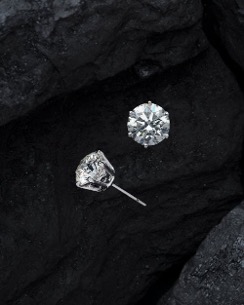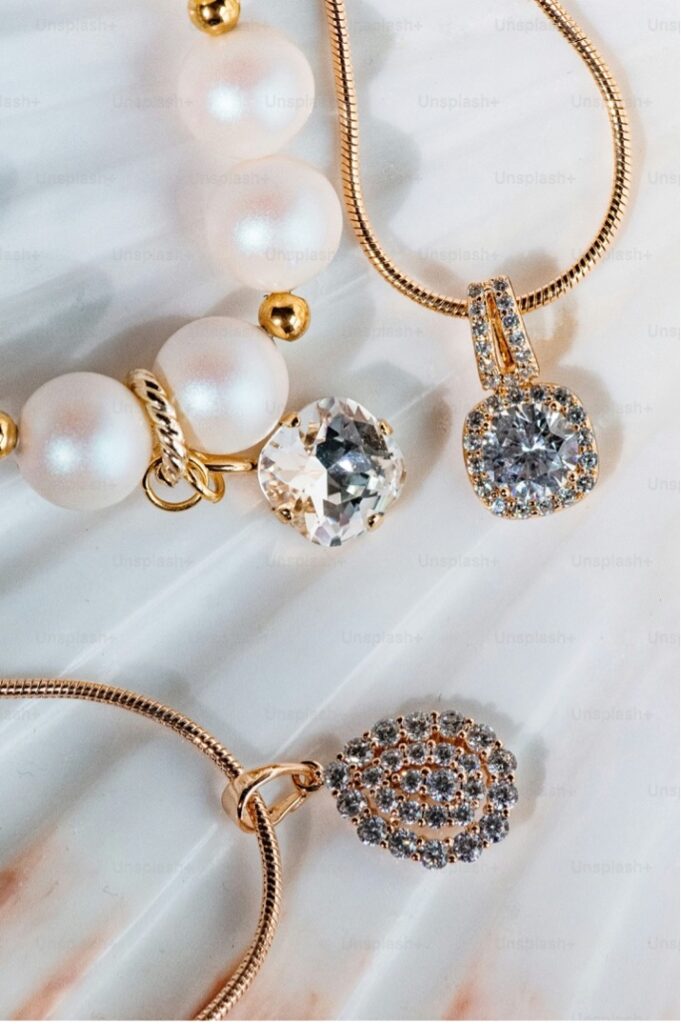
On a cold January evening in 2016, actress Emma Watson made her entrance at the Met Gala, wearing a stunning gown crafted from recycled plastic bottles. But while the eco-friendly dress stole the show, Watson would go even further to promote sustainability in fashion.

Two years later, at the 2018 Vanity Fair Oscars afterparty, she dazzled once again—this time with lab-grown diamonds. Her ensemble featured ethically sourced jewellery, including bracelets and rings designed with diamonds created in a laboratory, free from any mining or conflict. In both moments, Watson sent a powerful message: luxury can be beautiful without compromising on ethics or the environment.

Photo Source: @fashion_emmawatson on Instagram
In recent years, more and more consumers and celebrities have been opting for sustainable diamonds like the ones worn by Watson. But what makes lab-grown diamonds the new frontier in conscious luxury? Let’s explore how this innovation is transforming the world of jewellery and why it could be the right choice for you too.

The Sustainability Factor: Why Lab-Grown Diamonds Matter
Lab-grown diamonds are created in a controlled environment using advanced technology that mimics the natural process by which diamonds form beneath the Earth’s surface. There are two main methods: High Pressure, High Temperature (HPHT) and Chemical Vapour Deposition (CVD). Both produce diamonds that are chemically, physically, and optically identical to natural ones.

The key difference lies in the environmental impact. Traditional diamond mining has long been associated with concerns such as habitat destruction, water pollution, and significant carbon emissions. In contrast, lab-grown diamonds require fewer resources and have a smaller environmental footprint. Some of the most appealing sustainability benefits include:
- Reduced carbon emissions: While mining releases significant CO₂, lab-grown diamonds typically produce far less.

- Minimal land use: Mining disrupts large areas of land, whereas lab-grown diamonds are produced in controlled facilities.

- Water conservation: Diamond mining consumes massive amounts of water, a resource that is drastically reduced in the production of lab-grown stones.

- Ethical considerations: Lab-grown diamonds eliminate concerns around conflict diamonds, which have historically funded wars and human rights abuses. Labour exploitation in mining communities is a significant problem. Many workers in diamond mines, especially in developing countries, face dangerous conditions, long hours, and minimal pay. The allure of a natural diamond can come with a human cost that is invisible to the end consumer. In contrast, lab-grown diamonds eliminate this ethical dilemma, offering peace of mind that no one has been exploited in the production process. For buyers who prioritize ethics, this can be a decisive factor.

In a world increasingly concerned with climate change and sustainability, these factors make lab-grown diamonds an attractive option for those looking to reduce their environmental impact without sacrificing luxury.

Celebrity Endorsement: Lab-Grown Diamonds in the Spotlight
Sustainability is no longer a niche concern in the fashion industry. With consumers increasingly aware of the environmental and social costs of their purchases, sustainable fashion has moved to the forefront of luxury brands’ agendas. Lab-grown diamonds fit seamlessly into this narrative, offering a way to indulge in the beauty of diamonds without compromising on ethics or environmental responsibility.

The rise of lab-grown diamonds in high fashion has been supported by the growing number of celebrities and fashion-forward designers who have embraced this eco-conscious choice. Aside from Emma Watson, another notable endorsement comes from Leonardo DiCaprio, who has invested in lab-grown diamond companies. DiCaprio’s support for lab-grown diamonds stems from his dedication to environmental causes, and his involvement has helped legitimize these stones in the eyes of consumers who might have previously been hesitant to consider them.

In the fashion world, Stella McCartney—known for her cruelty-free and sustainable practices—has also integrated lab-grown diamonds into her collections. Her decision to use these diamonds aligns with her broader philosophy of sustainability and has further propelled them into the mainstream.

Photo Source: @caradelevigne on Instagram
Comparing Lab-Grown vs. Natural Diamonds: Are They Really the Same?
One of the most common questions surrounding lab-grown diamonds is whether they are truly comparable to natural diamonds. In terms of appearance and quality, the answer is a resounding yes. Lab-grown diamonds are indistinguishable from their natural counterparts without specialized equipment. They possess the same brilliance, fire, and clarity, making them just as desirable for luxury jewellery.

However, there are some key differences to consider:
- Price: Lab-grown diamonds are typically 20-40% less expensive than mined diamonds. This cost difference can make high-quality diamonds more accessible to a broader range of consumers.
- Rarity: While lab-grown diamonds are physically identical, some argue that natural diamonds carry a sense of history and rarity that lab-grown stones cannot replicate. Mined diamonds have formed over billions of years, which gives them a certain allure that lab-grown stones, produced in weeks or months, may lack.

The Future of Luxury: Where Lab-Grown Diamonds Are Headed
Lab-grown diamonds are not just a trend—they represent a fundamental shift in how we think about luxury and sustainability. As technology advances and production methods become even more efficient, we are likely to see lab-grown diamonds become more prominent in the fine jewellery market.

As brands continue to innovate, we may also witness the rise of customized diamonds—stones grown and designed to meet the exact specifications of the buyer. This would add a personal touch that could enhance the appeal of lab-grown diamonds, making them not just a sustainable choice, but a unique one.
For consumers, the appeal is clear: lab-grown diamonds allow individuals to make a statement of style while also aligning with their values of environmental responsibility and ethical consumption.

Conclusion: Why You Should Consider Lab-Grown Diamonds
In an age where sustainability is not just a trend but a necessity, lab-grown diamonds offer a perfect solution for those who want to embrace luxury without compromise. Whether you’re looking for an engagement ring, a special piece of jewellery, or simply want to be a part of the movement toward a more sustainable future, lab-grown diamonds provide the brilliance, beauty, and ethical integrity that today’s consumers are seeking.

